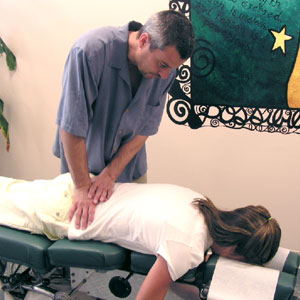Allergic Asthma Helped by Chiropractic
The Annals of Vertebral Subluxation Research published a study on January 3, 2023, documenting the improvement through chiropractic of a patient who was suffering with allergic asthma.
The Asthma and Allergy Foundation of America describes this condition by saying, "Many people with asthma also have allergies. In fact, allergens are the most common asthma trigger. This is called allergic asthma. Allergic asthma is most common in early childhood and steadily decreases through adulthood."
 This
study describes how common asthma is by reporting, "Asthma
is a common respiratory condition affecting 25.7 million
people with increasing prevalence. Asthma is more frequently
seen in children and is the leading cause of pediatric
admissions to hospitals, as well as absences from school."
Although the condition is more common in children, and in
many cases disappears in adults, some cases do continue into
adulthood.
This
study describes how common asthma is by reporting, "Asthma
is a common respiratory condition affecting 25.7 million
people with increasing prevalence. Asthma is more frequently
seen in children and is the leading cause of pediatric
admissions to hospitals, as well as absences from school."
Although the condition is more common in children, and in
many cases disappears in adults, some cases do continue into
adulthood.
In this case, a 38-year-old woman who was suffering with allergic asthma went to the chiropractor. She had been suffering with this condition since she was a teenager. On a scale of 1 to 10, with 10 being the worst, the woman rated her allergies as an 8 out of 10. She also reported that she was suffering with chronic sinus issues, headaches, and leg numbness.
A chiropractic examination revealed the presence of subluxations. Specific forms of chiropractic adjustments were started to address the subluxations at the initial rate of three visits per week.
After about one month of chiropractic care, a first assessment was done to evaluate the amount of improvement. At that time, the woman reported that she had experienced considerable improvement with her asthma. She related that she had improved about 40% overall. The woman also reported that she saw moderate improvements in her headaches and leg numbness, and mild improvement with her sinus problems.
On the woman’s second assessment, she reported that she no longer had symptoms of asthma and had experienced complete improvement with her allergies. In addition to this, she also reported that she had seen significant improvement with her headaches and leg numbness with complete improvement with her sinus problems.
In their conclusion, the study authors summed up this case by saying, "The results of this case suggest that specific chiropractic adjustments delivered to primary subluxations can be beneficial to people with allergic asthma. This case supports chiropractic care in the management of people with non-musculoskeletal conditions, namely asthma."
 To
the clinician delivering SMT, this sound is frequently
associated with the perception of a successful intervention
and when it does not occur, some clinicians may apply
another treatment thrust.
To
the clinician delivering SMT, this sound is frequently
associated with the perception of a successful intervention
and when it does not occur, some clinicians may apply
another treatment thrust. The
study stated the importance of the findings of this study by
noting, "Depression is the second most prevalent mental
disorder among children and adolescents, yet only a small
proportion seek or receive disorder-specific treatment.
Physical activity interventions hold promise as an
alternative or adjunctive approach to clinical treatment for
depression."
The
study stated the importance of the findings of this study by
noting, "Depression is the second most prevalent mental
disorder among children and adolescents, yet only a small
proportion seek or receive disorder-specific treatment.
Physical activity interventions hold promise as an
alternative or adjunctive approach to clinical treatment for
depression."  The
NIDCD notes that this condition currently affects
approximately 615,000 individuals in the United States and
that 45,500 new cases are diagnosed each year. The condition
can occur at any age but is most common between 40 and 60
years of age.
The
NIDCD notes that this condition currently affects
approximately 615,000 individuals in the United States and
that 45,500 new cases are diagnosed each year. The condition
can occur at any age but is most common between 40 and 60
years of age.